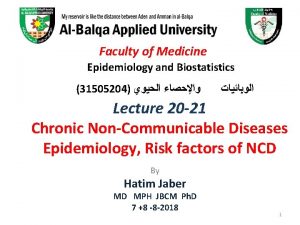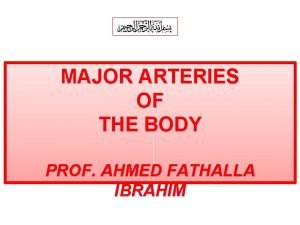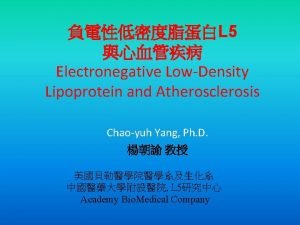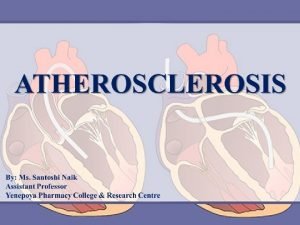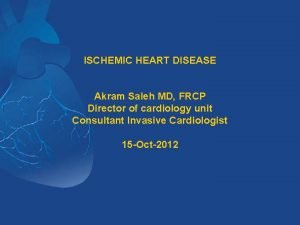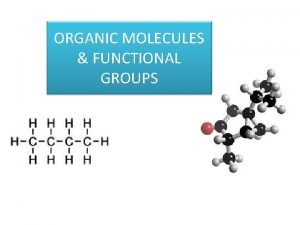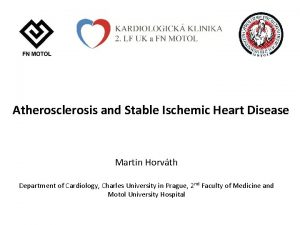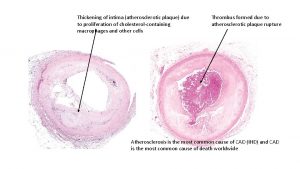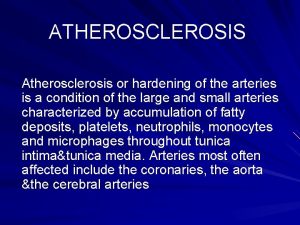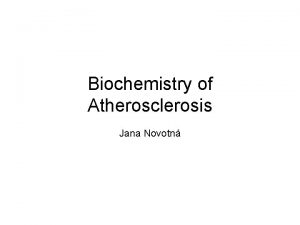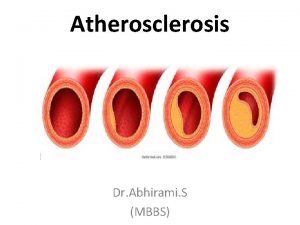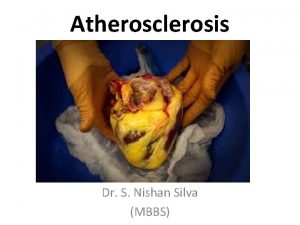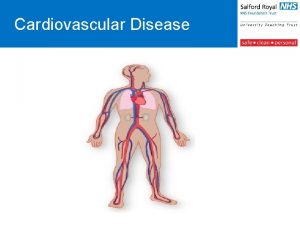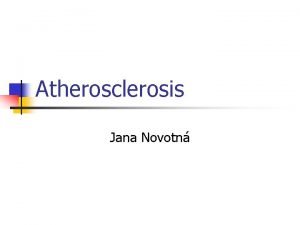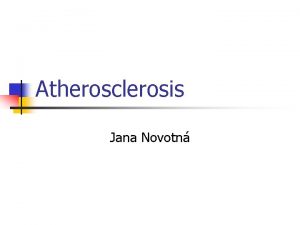Cardiovascular Disease Atherosclerosis Atherosclerosis means hardening of the









- Slides: 9

Cardiovascular Disease

Atherosclerosis • Atherosclerosis means ‘hardening of the arteries’. • Caused by a build up of yellow fatty deposits called ‘plaques’. • A plaque can build up until it restricts or even blocks the blood flow through an artery. • Plaques can form anywhere but are particularly likely in coronary and carotid arteries. • Several factors including high blood pressure and chemicals in cigarettes can lead to atherosclerosis.

• Atherosclerosis begins with damage to the endothelial lining of an artery. • This causes an inflammatory response in the body and white blood cells arrive at the site. The cells gather chemicals from the blood, including cholesterol which causes a fatty deposit known as an atheroma to develop.

• Fibrous tissue also builds up around the atheroma making the plaque harden. • This causes the artery wall to harden so that it is less elastic. • This is atherosclerosis.

Problems caused by atherosclerosis The artery lumen becomes very small which causes a increases in blood pressure. This can increase the risk of atherosclerosis occurring elsewhere in the body. • Aneurysm: Blood can build up behind a blockage causing the artery wall to bulge and weaken. This increases the chances of the wall splitting and internal bleeding occurring. Aneurysms are often fatal. • High Blood Pressure: Can cause damage in other organs such as kidneys, eyes and the brain.

Heart Disease • The two most common forms are angina and Myocardial Infarction (heart attack), but there are many others. • These two are closely linked to atherosclerosis. Angina • Plaques can build up in the coronary arteries and reduce blood flow to areas of the heart muscle. • When a person exercises, the artery can deliver enough blood to the muscle so it respires anaerobically • This causes pain in the chest, jaw and arms , and makes people feel breathless.

Myocardial Infarction Heart attacks can be caused by blood clots caused by atherosclerosis. The walls around a plaque are stiffened making them prone to cracks. Platelets detect this damage and trigger the clotting mechanism. The clot can then block the whole blood vessel, if this occurs in a coronary artery it causes a heart attack. • The heart muscle is starved of oxygen and nutrients. • • Symptoms • Severe chest pain occurring any time. • Pain can spread into jaw and arms • Pain can be sudden or last for several hours.

Factors that increase the risk of Cardiovascular Disease • Inheritance: Some people are genetically predisposed to some diseases. • Diet: A diet high in saturated fat, salt and alcohol increases the risk. • Age: Those most at risk are over the age of 40. • Gender: Men are more likely to suffer than women. • High Blood Pressure (see later) • Smoking: Chemicals in tobacco smoke can increase the risk. • Physical Inactivity: Exercise can help decrease the risk.

The Role of high blood pressure in CVD • High blood pressure is known as hypertension. • There are many causes of hypertension, including: stress, smoking, a high fat diet and lack of exercise. • Hypertension increases the amount of wear and tear that occurs in your arteries because they have to work harder. • The amount of friction between the wall of the artery and the blood cells is increased and damage is more likely to occur on the artery wall. • This then leads to plaque formation to repair the damage.

